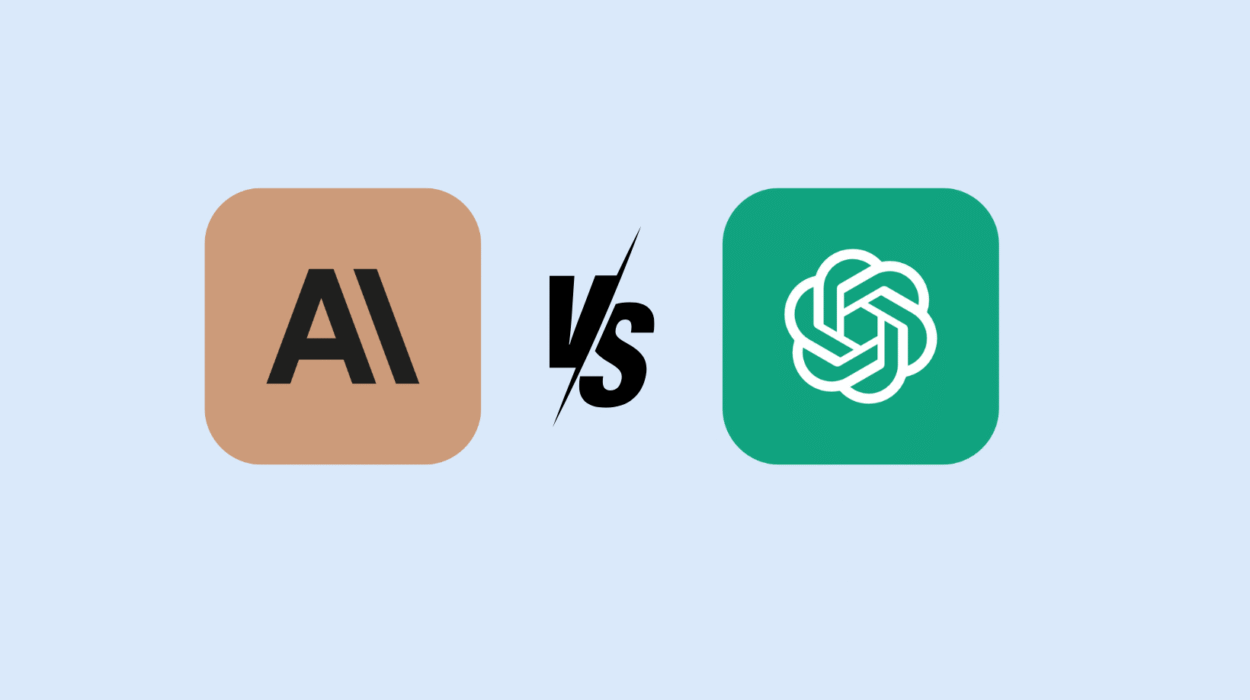In the past two decades, artificial intelligence has evolved from a distant dream into a living, breathing reality that shapes daily life. From voice assistants that anticipate commands to medical algorithms that can detect disease earlier than any human physician, AI is no longer confined to research labs. It has embedded itself into society’s fabric, driving innovation in healthcare, finance, transportation, communication, and even creativity. Yet, as AI grows more powerful, it grows more mysterious. Many of the systems we rely on are built using deep learning models, structures so intricate that not even their creators can fully explain how they arrive at their conclusions. This “black box” nature of AI introduces a paradox: while we trust these systems to make crucial decisions, we cannot always understand the reasoning behind them. It is here that Explainable AI (XAI) emerges, not as a mere technical feature, but as a fundamental necessity for trust, safety, and ethical responsibility.
Why Explanation Matters
When a human expert makes a decision—say, a doctor diagnosing a patient or a judge ruling on a case—they are expected to justify their reasoning. Society demands explanations because explanations establish accountability. Without them, trust crumbles. The same is true for AI. Imagine an algorithm denying a loan, predicting criminal behavior, or recommending a life-altering medical treatment. If it cannot provide a clear explanation, those affected may feel powerless, suspicious, or even betrayed.
Explainable AI is more than a technical solution. It represents a bridge between human understanding and machine intelligence. It allows people to peer into the black box and ask: Why did the model make this choice? What factors mattered most? Could there be bias or error? By answering these questions, XAI becomes essential not just for engineers and scientists but for society as a whole.
The Black Box Problem
At the heart of the explainability challenge lies the black box problem. Traditional AI models, such as linear regression or decision trees, were relatively transparent. A human could follow the steps, trace the logic, and see how input data led to output predictions. But modern machine learning, particularly deep learning, involves neural networks with millions or even billions of parameters. Each parameter adjusts weights in ways imperceptible to humans, resulting in astonishing accuracy but baffling opacity.
Consider a neural network trained to recognize faces. It can correctly identify a person in a photo with near-human precision. Yet, when asked why it recognized a face as belonging to a specific individual, the system cannot provide a straightforward answer. Its decision comes from layers upon layers of mathematical transformations invisible to human reasoning. The black box works, but it cannot speak the language of human explanation.
The Birth of Explainable AI
Explainable AI arose as a response to this opacity. The concept is not entirely new. Since the early days of expert systems in the 1980s, researchers sought ways to make artificial decision-making transparent. Those systems relied on “if–then” rules, which were naturally interpretable. But as machine learning moved toward data-driven models, interpretability declined while predictive power increased. The trade-off between accuracy and transparency became one of the defining dilemmas of modern AI.
In recent years, however, this dilemma has become urgent. Autonomous vehicles, predictive policing, algorithmic hiring, and AI-assisted medical diagnoses cannot remain opaque. Regulatory frameworks such as the European Union’s General Data Protection Regulation (GDPR) have even codified a “right to explanation” for automated decisions. Thus, explainable AI has transformed from an academic pursuit into a social and legal demand.
Human Trust and Transparency
Trust is the cornerstone of explainable AI. Humans are naturally skeptical of systems they cannot understand, especially when those systems influence personal well-being. Imagine a pilot relying on autopilot without knowing how it responds to turbulence, or a patient accepting medication prescribed by a computer without knowing why. The absence of explanation breeds fear.
Transparency alleviates this fear by allowing humans to see not just the output but the reasoning path. It answers essential questions: What data influenced the model most strongly? Did irrelevant or biased information sway the result? Are the predictions consistent across similar scenarios? By making answers visible, XAI strengthens trust, which in turn promotes adoption. Without transparency, AI risks rejection, no matter how accurate it may be.
Interpretability vs. Accuracy
One of the most challenging aspects of explainable AI is balancing interpretability with accuracy. Simpler models, such as linear regression, are easy to interpret but may lack predictive power on complex tasks. Deep neural networks, on the other hand, excel at accuracy but resist interpretation. This trade-off forces scientists to make hard choices: do we prioritize performance, or do we prioritize transparency?
The answer increasingly lies in hybrid approaches. Researchers are developing methods to interpret even the most complex models without sacrificing accuracy. These include techniques like feature importance ranking, visualization of neural activations, and local explanations of specific predictions. While perfect transparency may remain elusive, these methods offer meaningful windows into the decision-making process.
Methods of Explainability
To make AI explainable, researchers have devised several approaches. One category is model-specific explainability, where the internal mechanisms of the model itself are designed to be interpretable. For example, decision trees explicitly show which features guide decisions. Another category is model-agnostic methods, which can be applied to any model, regardless of its internal complexity.
Among the most widely used techniques are methods like LIME (Local Interpretable Model-Agnostic Explanations), which approximates a complex model locally to explain individual predictions, and SHAP (Shapley Additive Explanations), which borrows from game theory to assign each feature a contribution score. Visualization tools allow researchers to see which parts of an image or text influenced a decision most strongly. Together, these methods turn opaque models into systems that can at least justify their conclusions in human terms.
Bias and Fairness
Explainability is not only about understanding but also about uncovering hidden biases. AI models are trained on data, and data reflects human history—with all its flaws, prejudices, and inequities. If an AI system is trained on biased data, its predictions will mirror that bias, often amplifying existing injustices.
Explainable AI provides a way to expose these biases. By showing which features influence decisions most, XAI helps detect when irrelevant or unfair patterns dominate. For instance, if an algorithm for hiring places disproportionate weight on gender or race, explainability tools can reveal the distortion. In this way, XAI becomes not just a technical safeguard but an ethical instrument for justice.
XAI in Healthcare
Few areas highlight the necessity of explainable AI more vividly than healthcare. Doctors cannot simply accept a computer’s recommendation without justification. A model suggesting a cancer treatment must provide more than a label; it must show why it reached that conclusion, which symptoms or markers it considered most crucial, and how confident it is in its prediction. Patients, too, deserve transparency, as decisions in medicine are literally matters of life and death.
In recent years, hospitals and research institutions have begun deploying XAI-powered tools that highlight critical medical images, emphasize biomarkers in genetic data, or provide probability scores alongside diagnoses. By pairing AI insight with human interpretability, these systems foster trust between patients, doctors, and machines.
XAI in Finance
The financial world also depends heavily on explainability. Credit scores, loan approvals, fraud detection, and investment predictions all influence livelihoods. Regulators require transparency to ensure fairness and accountability. A denied loan cannot rest on an opaque algorithm; it must come with reasons.
Here, XAI tools provide clarity by showing which financial behaviors, such as payment history or debt ratio, weighed most in a decision. This not only satisfies regulatory requirements but also helps customers understand how to improve their outcomes. Transparency transforms AI from a mysterious judge into a guide.
XAI in Autonomous Systems
Autonomous vehicles and drones are marvels of modern engineering, but they cannot remain black boxes. When a car makes a split-second decision to brake, swerve, or accelerate, lives are at stake. If an accident occurs, investigators must know why the AI acted as it did. Without explainability, accountability becomes impossible.
Explainable AI in autonomous systems helps engineers trace decision pathways, understand failures, and refine safety protocols. It ensures that when machines act, their reasoning is not only efficient but also comprehensible. In this way, XAI underpins the very safety of emerging autonomous technologies.
The Psychological Dimension of Explanation
Humans do not simply want explanations; they want explanations in human terms. An explanation that is mathematically precise but conceptually impenetrable fails to satisfy. Thus, XAI must translate complex reasoning into narratives people can understand. This involves not only technical tools but also psychological insight.
Effective explanations often rely on analogy, storytelling, or highlighting key features in simple language. Just as a teacher simplifies a concept for students, explainable AI must present reasoning at a human level without losing truth. Bridging this cognitive gap is one of the greatest challenges in XAI.
The Future of Explainable AI
The journey toward fully explainable AI is still unfolding. Researchers are working on models that are inherently interpretable, new visualization tools that make hidden processes visible, and frameworks that measure the quality of explanations themselves. Regulatory bodies are increasingly demanding explainability, pushing industries to adopt XAI practices.
In the future, explainable AI will likely become the norm rather than the exception. It will not be a luxury feature but a baseline expectation. Just as consumers today expect seatbelts in cars, tomorrow they will expect AI systems to justify their decisions transparently.
Ethical Dimensions of XAI
Explainable AI is not only about science and technology but about ethics. It embodies respect for human dignity, ensuring that people are not subject to arbitrary, incomprehensible decisions. It supports justice by exposing bias, accountability by clarifying responsibility, and trust by fostering transparency.
Without XAI, AI risks alienation. With it, AI becomes a partner in human progress, working not in shadows but in light. The pursuit of explainability is, in essence, the pursuit of ethical harmony between humans and machines.
A World Shaped by Understanding
Albert Einstein once remarked that “the most incomprehensible thing about the universe is that it is comprehensible.” The same could be said of AI. For all its complexity, AI must remain comprehensible if it is to serve humanity. Explainable AI is the discipline that makes this possible.
It ensures that the brilliance of machine learning does not blind us but guides us. It reminds us that intelligence—artificial or human—is not measured only by accuracy but by clarity, trust, and understanding. As AI grows ever more powerful, explainability will become the thread that binds technology to humanity, reason to responsibility, and innovation to ethics.
The story of explainable AI is not just about algorithms. It is about people. It is about building a future where intelligence, whether born of neurons or silicon, remains accountable to the world it seeks to serve. In the end, explainable AI is not only about machines explaining themselves; it is about humanity insisting that progress must always be transparent, fair, and profoundly human.






